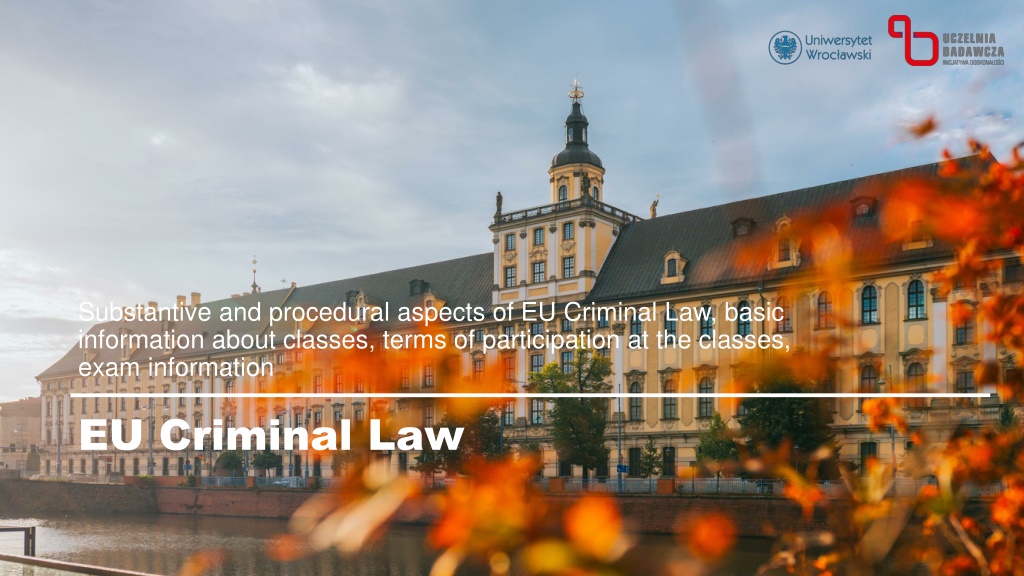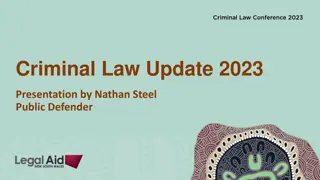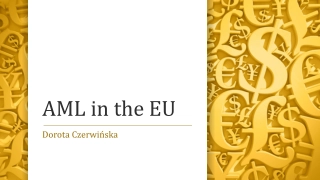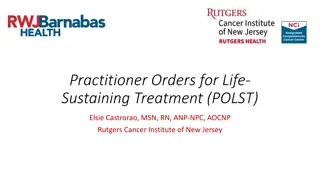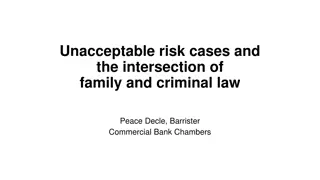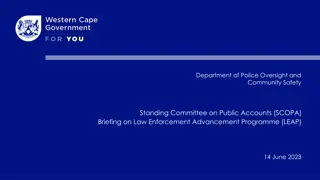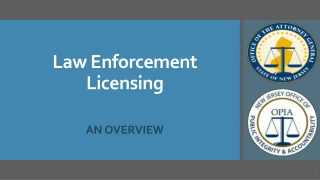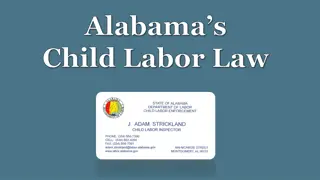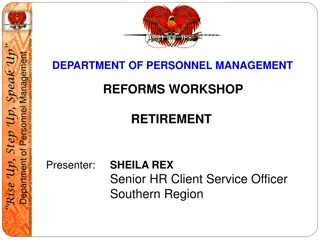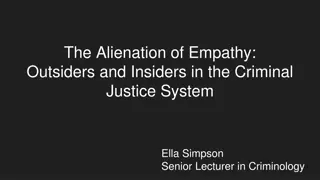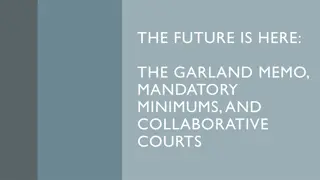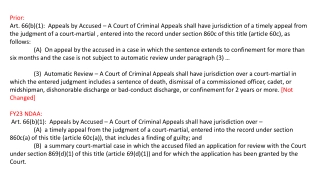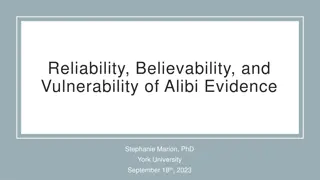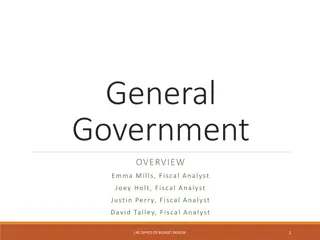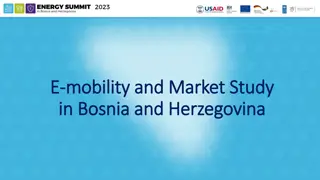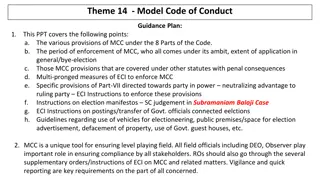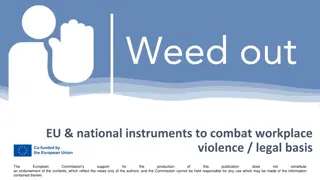Overview of EU Criminal Law: Classes, Exam, and Directives
This content provides detailed information on substantive and procedural aspects of EU Criminal Law, covering classes, terms of participation, exam details, and specific directives. It includes guidelines on passing the classes through active participation, presentations, and exams. The schedule outlines topics such as victim rights, accused rights, data protection, and more. Additionally, it lists important CJEU cases and substantive criminal law directives.
Download Presentation
Please find below an Image/Link to download the presentation.
The content on the website is provided AS IS for your information and personal use only. It may not be sold, licensed, or shared on other websites without obtaining consent from the author. Download presentation by click this link. If you encounter any issues during the download, it is possible that the publisher has removed the file from their server.
Presentation Transcript
Substantive and procedural aspects of EU Criminal Law, basic information about classes, terms of participation at the classes, exam information EU Criminal Law
How to pass the classes? Participation in the classes Active participation being involved in the discussion, preparing materials/doing homework Preparing a short presentation about one judgment of the CJEU (with references to the ECtHR jurisprudence) Take/pass an exam at the end of the classes (or class before the last of this semester). Exam/test 15 questions, 2 short case study, one open question
Classes schedule 1. Basic information about the classes. Short reminder about substantive criminal law in the EU 2. Victim s rights in the EU. Case studies - directive 2012/29 3. Accused's rights in criminal proceedings - right to translation and interpretation (Directive 2010/64) 4. Accused rights in criminal proceedings - right to information in criminal proceedings (Directive 2012/13) 5. Accused rights in criminal proceedings - children's rights (Directive 2016/800) 6. Data protection in the EU (and european leagal system) 7. EPPO - European Public Prosecutor Office 8. Test
The CJEU cases 1. C-38/18, Gambino and Hyka 2. C-338/20, D.P. 3. C-612/15, Kolev 4. C-209/22, AB 5. C-688/18, TX i UW 6. C-348/21, HYA and others
Substantive criminal law directves (and one framework decision) Directive 2011/36/EU of the European Parliament and of the Council of 5 April 2011 on preventing and combating trafficking in human beings and protecting its victims, and replacing Council Framework Decision 2002/629/JHA Directive 2011/93/EU of the European Parliament and of the Council of 13 December 2011 on combating the sexual abuse and sexual exploitation of children and child pornography, and replacing Council Framework Decision 2004/68/JHA Directive 2013/40/EU of the European Parliament and of the Council of 12 August 2013 on attacks against information systems and replacing Council Framework Decision 2005/222/JHA Directive 2014/62/EU of the European Parliament and of the Council of 15 May 2014 on the protection of the euro and other currencies against counterfeiting by criminal law, and replacing Council Framework Decision 2000/383/JHA
Substantive criminal law directves (and one framework decision) Directive (EU) 2017/541 of the European Parliament and of the Council of 15 March 2017 on combating terrorism and replacing Council Framework Decision 2002/475/JHA and amending Council Decision 2005/671/JHA Directive (EU) 2017/1371 of the European Parliament and of the Council of 5 July 2017 on the fight against fraud to the Union's financial interests by means of criminal law Directive (EU) 2017/1371 of the European Parliament and of the Council of 5 July 2017 on the fight against fraud to the Union's financial interests by means of criminal law Directive (EU) 2018/1673 of the European Parliament and of the Council of 23 October 2018 on combating money laundering by criminal law Directive (EU) 2019/713 of the European Parliament and of the Council of 17 April 2019 on combating fraud and counterfeiting of non-cash means of payment and replacing Council Framework Decision 2001/413/JHA
Structure of the (most) substantive criminal law directives: 1. 2. 3. 4. 5. 6. Definitions Lists of ofences which should be penalised in the Member States Liablity of legal persons Obligation to introduce effective investigation measures Protection of victims Cooperation between Member States Recitals (motives to the directive) also important to proper analyse of the directive. In the recitals the EU lawmakers explain the subsiriarity and proprtionality principles Could you find the prinicples of proportionality and subsidiarity in the directives?
Money loundering directive: (21) This Directive respects the principles recognised by Article 2 of the Treaty on European Union (TEU), respects fundamental rights and freedoms and observes the principles recognised, in particular, by the Charter of Fundamental Rights of the European Union, including those set out in Titles II, III, V and VI thereof which encompass, inter alia, the right to respect for private and family life and the right to protection of personal data, the principles of legality and proportionality of criminal offences and penalties, covering also the requirement of precision, clarity and foreseeability in criminal law, the presumption of innocence, as well as the rights of suspects and accused persons to have access to a lawyer, the right not to incriminate oneself and the right to a fair trial. This Directive has to be implemented in accordance with those rights and principles, taking also into account the European Convention for the Protection of Human Rights and Fundamental Freedoms, the International Covenant on Civil and Political Rights, and other human rights obligations under international law. (22) Since the objective of this Directive, namely to subject money laundering in all Member States to effective, proportionate and dissuasive criminal penalties, cannot be sufficiently achieved by Member States but can rather, by reason of the scale and effects of this Directive, be better achieved at Union level, the Union may adopt measures, in accordance with the principle of subsidiarity as set out in Article 5 of the TEU. In accordance with the principle of proportionality, as set out in that Article, this Directive does not go beyond what is necessary to achieve that objective.
Case study practise 1. Identify the directive/other legal acts. 2. Find important provisions (like definitions, list of offences, rights of suspect/accused person, rights of the victim) 3. Analyse the questions from the case study and find mistakes/topics to discuss 4. Answer the questions :)
Case study practise Next case studies questions: 1. Did she/he commit any crime? 2. What kind of crime? 3. What is the sanction based on the EU Criminal Law? 4. Do you know, how specific provision was implemented in your country? 5. Who is a suspect/accused? When he/she will become a suspect/accused? 6. Who is the victim? 7. What kind of investigative measures the criminal proceedings authority may apply?
Case study hate speech A student at the University of Wroclaw set up an anonymous account on the X portal. He did not provide his real personal information; the account was linked to an email address invented for this purpose. He used the account to insult people on the Internet. Over time, however, his profile began to show up - initially in the form of "pass it on" - posts denying the Holocaust and praising the activities of the NSDAP. After the outbreak of war in Israel, he additionally began posting pro-Palestinian posts. He demanded the "annihilation" of the Jewish people. At the same time, alongside such posts, he posted false information about the social assistance Ukrainian refugees receive in Poland. He also insulted women, claiming that 4 women have the same brain capacity as one man, that their role is to sit at home and wash the dishes.
Case study money loundering Suddenly, the Adopt a Dog Foundation began to receive high cash contributions from various account numbers. The president of the Foundation was initially happy because she was finally no longer having financial problems and could provide proper living conditions for the dogs. Over time, however, she became suspicious of the transfers and took steps to determine who the generous donors was. However, she did not notify the police or other services. Over time, after the transfers were received, letters came to the foundation obliging it to place orders at certain pet stores. It turned out that the transfers came from a man known in criminal circles, professionally involved in extortion and racketeering, and trafficked in drugs. The foundation's president met with the "donor", who said that in that case they could talk openly - the transfers would continue to flow, she would order items from selected places, and sometimes order other - unrelated to the foundation's activities - materials. The donor stated that everyone would be happy, and the dogs would live better.
Case study sexual explotating of children Mr X, 32 years old, was involved in a sexual relationship with a 16-year-old girl. He recorded her during sexual activity - she was not aware of that - and posted all movies and photos on pornographic websites. After a while, he noticed that his movies became quite popular, so decided to "monetize" his "production". Unfortunately, his girlfriend found a movie with her and ended the relationship. She also informed her parents and tried to remove movies from the internet. Then, Mr X tried to clear his computer from movies with his ex-girlfriend, but at the same time, he started producing, using AI, pornographic material with the face and body of his ex.
